DR. W. DAVID SULLINS, JR. AWARD CALL FOR NOMINATIONS
The AOA Foundation and the InfantSEE® program invite the optometry community to submit nominations for the Dr. W. David Sullins, Jr. InfantSEE® Award. This award recognizes an individual doctor of optometry who has made significant contributions to optometry or his/her community for outstanding public service involving the InfantSEE® program.
The award will be presented at Optometry's Meeting® in Orlando, FL from June 16-20, 2010. The recipient will receive a $1,000 travel grant and gold medallion. To nominate a colleague, download the Sullins Award nomination form. (http://www.optometryscharity.org/infantsee/infantsee-award/)
All nomination forms are due by April 16, 2010. Please include a recent photograph of the nominee-digital photographs are preferred. Completed nominations may be e-mailed to [email protected] or mailed to:
The AOA Foundation Dr. W. David Sullins, Jr. Award Attn:
Mark Schwartz
243 N Lindbergh Blvd
1st Floor St. Louis, MO 63141
MainosMemos contains the latest research and information about eye and vision care of children, developmental disabilities, Traumatic/Acquired Brain Injury and other topics of interest to me (and hopefully you!).
Friday, March 19, 2010
New PubMed Journal
Indian Journal of Human Genetics
ISSN 0971-6866 (print); E-ISSN 1998-362X (electronic)
URL: http://www.ncbi.nlm.nih.gov/pmc/journals/1194/
Archive includes volume 14 (2008) to current.
Note: There is no embargo delay for this journal.
ISSN 0971-6866 (print); E-ISSN 1998-362X (electronic)
URL: http://www.ncbi.nlm.nih.gov/pmc/journals/1194/
Archive includes volume 14 (2008) to current.
Note: There is no embargo delay for this journal.
Raising Digital Kids

Robin Raskin of the Living in Digital Times/Raising Digital Kids Blog (http://livingindigitaltimes.com/index.php?option=com_wrapper&view;=wrapper&Itemid;=74) wrote a nice article on the potential effects of 3D television on children. Her article really pointed to some potential questions about your children and their 3D TV experience. Here are my responses:
1): Will children harm their eyes if they watch 3D television?
The answer to this is probably not. As with all TV viewing, however if you do too much, it can certainly affect your brain!
Children (and adults) with binocular vision (BV) problems (amblyopia/lazy eye and strabismus/eye turns) will either not appreciate the 3D experience or have complaints of eye strain, double vision, headache, and blurred vision; as well as, nausea and dizziness. Individuals with lazy eye and eye turns make up 3-6% of the population…so anywhere from 9-18 million people or more in the USA may have these problems. There was one study that showed 56% of those aged 18-38 having symptoms related to binocular vision problems. Another study suggested that more than 30% of college students may have these BV problems as well, including convergence insufficiency and other eye teaming and focusing anomalies.
2: Is there a difference between using the old red/blue glasses vs. the new active shutter glasses?
Yes. The shutter glasses should make viewing in 3D easier…but more costly. I heard on the news that after you pay thousands for that new 3D TV…you then need to pay about $150 for each pair of glasses.
As Robin noted in her blog, these glasses will probably not fit children very well.
3: When people can’t see 3D is that because of the older glasses or is that even with new glasses?
The glasses probably make little difference…although it might be easier to appreciate the 3D with the shutter glasses. It’s not the glasses. It’s the eyes and the brain.
4: Do you know any 3D glasses manufacturers that make them in kids’ sizes?
No. With this potential market being so huge, I would think that kids sized glasses will soon be available.
Other issues…
As I noted in a recent editorial (Maino D. The binocular vision dysfunction pandemic. Optom Vis Dev 2010;41(1):6-13. Available at http://www.covd.org/Portals/0/Editorial_BinocularPandemic.pdf); In comparison to [various eye diseases]; binocular vision disorders (BV) are…more frequently encountered … and have significant negative effects on one’s quality of life. … one study revealed that the prevalence of accommodative and BV … disorders is 9.7 times greater than the prevalence of ocular disease in children ages six months to five years old, and it’s 8.5 times greater than the prevalence of ocular disease in children ages six to 18 years old.1 … a study of 1,679 patients between the ages of 18 and 38 showed that 56.2% presented with symptoms associated with BV dysfunction. Although these are alarming statistics, a disconnect exists between the high prevalence of BV disorders in the general population and the BV patients .. being evaluated by … [eye doctors] ….
We need to tell our eye doctors to start evaluating and treating these vision disorders….or if they do not, to refer their patients to a doctor who does. The doctors who not only diagnose but treat these problems are usually members of the organizations such as the College of Optometrists in Vision Development (http:/www.covd.org). Contact this group if you have any additional questions or concerns.
Dominick M. Maino, OD, MEd, FAAO, FCOVD-A
Professor, Pediatrics/Binocular Vision Illinois College of Optometry/Illinois Eye Institute
Editor, Optometry & Vision Development
Thursday, March 18, 2010
Optometric Care within the Public Health Community: Free Online Book
Optometric Care within the Public Health Community
Stanley Hatch, John Whitener, W. Howard McAlister, Sandra Block
Read This First
Introduction and Forward by Haffner
Section 1 Foundations of Public Health
Section 1, Foundations of Public Health/Sect 1, Why Study Public Health History, by Hettler.pdf
Section 1, Foundations of Public Health/Sect 1, Public Health in Practice by Davis and Shipp.pdf
Section 1, Foundations of Public Health/Sect 1, Optometry and APHA by Caplan and Maslovitz.pdf
Section 1, Foundations of Public Health/Sect 1, Core Competencies in Health Promotion by Block and Wingert.pdf
Section 2 Principles of Public Health
Section 2, Principles of Public Health/Sect 2, Epidemiology by Newcomb.pdf
Section 2, Principles of Public Health/Sect 2, Putting Research into Clinical Practice by Jones and Hoppe.pdf
Section 2, Principles of Public Health/Sect 2, Evidenced Based Health Care, by Hom and Chous.pdf
Section 2, Principles of Public Health/Sect 2, Health Promotion Disease Prevention by Bowyer.pdf
Section 2, Principles of Public Health/Sect 2, Public Health Optometry Economics, by Frick.pdf
Section 2, Principles of Public Health/Sect 2, Public Health Law by Soto.pdf
Section 2, Principles of Public Health/Sect 2, Electronic Health Records and Public Health Informatics by Jackson.pdf
Section 2, Principles of Public Health/Sect 2, Environmental Vision by Weaver and Good.pdf
Section 2, Principles of Public Health/Sect 2, Quality of Life Assessment and Research on Health Care Outcomes, by Stelmack.pdf
Section 2, Principles of Public Health/Sect 2, Study Design for Survey Research by Hatch.pdf
Section 2, Principles of Public Health/Sect 2, Vision Screening by Hatch.pdf
Section 3 Government Role in Health Care
Section 4 Access and Barriers to Eye and Health Care
Section 5 World Optometry
Stanley Hatch, John Whitener, W. Howard McAlister, Sandra Block
Read This First
Introduction and Forward by Haffner
Section 1 Foundations of Public Health
Section 1, Foundations of Public Health/Sect 1, Why Study Public Health History, by Hettler.pdf
Section 1, Foundations of Public Health/Sect 1, Public Health in Practice by Davis and Shipp.pdf
Section 1, Foundations of Public Health/Sect 1, Optometry and APHA by Caplan and Maslovitz.pdf
Section 1, Foundations of Public Health/Sect 1, Core Competencies in Health Promotion by Block and Wingert.pdf
Section 2 Principles of Public Health
Section 2, Principles of Public Health/Sect 2, Epidemiology by Newcomb.pdf
Section 2, Principles of Public Health/Sect 2, Putting Research into Clinical Practice by Jones and Hoppe.pdf
Section 2, Principles of Public Health/Sect 2, Evidenced Based Health Care, by Hom and Chous.pdf
Section 2, Principles of Public Health/Sect 2, Health Promotion Disease Prevention by Bowyer.pdf
Section 2, Principles of Public Health/Sect 2, Public Health Optometry Economics, by Frick.pdf
Section 2, Principles of Public Health/Sect 2, Public Health Law by Soto.pdf
Section 2, Principles of Public Health/Sect 2, Electronic Health Records and Public Health Informatics by Jackson.pdf
Section 2, Principles of Public Health/Sect 2, Environmental Vision by Weaver and Good.pdf
Section 2, Principles of Public Health/Sect 2, Quality of Life Assessment and Research on Health Care Outcomes, by Stelmack.pdf
Section 2, Principles of Public Health/Sect 2, Study Design for Survey Research by Hatch.pdf
Section 2, Principles of Public Health/Sect 2, Vision Screening by Hatch.pdf
Section 3 Government Role in Health Care
Section 4 Access and Barriers to Eye and Health Care
Section 5 World Optometry
New PubMed Journal
Middle East African Journal of Ophthalmology
ISSN 0974-9233 (print); E-ISSN 0975-1599 (electronic)
URL: http://www.ncbi.nlm.nih.gov/pmc/journals/1154/
Archive includes volume 16 (2008) to current.
Note: There is no embargo delay for this journal.
ISSN 0974-9233 (print); E-ISSN 0975-1599 (electronic)
URL: http://www.ncbi.nlm.nih.gov/pmc/journals/1154/
Archive includes volume 16 (2008) to current.
Note: There is no embargo delay for this journal.
New York Times Article: A Response to Yellow Journalism
There was an article in the New York Times Sunday magazine: http://www.nytimes.com/2010/03/14/magazine/14vision-t.html?pagewanted=1&hp; that pretended to be an even handed review of optometric vision therapy. By its tone alone you can read the author's bias. If this is supposed to be journalism....it is a representation of journalism at its very worst. The author, Judith Warner, and the NY Times should hang their heads in shame and smother their embarrassment in news-ink. If you read this article...please also read all the wonderful comments by our patients and family members on how optometric vision therapy significantly changed their lives i a positive fashion...Please read how one of my colleagues responded on SOVOTO by clicking on the title above. DM
...The author of this article is Judith Warner, a frequent contributor to the NY Times who lives in Washington, D.C. Ms. Warner uses this article to gain publicity for her new book, entitled: "We've Got Issues: Children and Parents in the Age of Medication". The article masquerades as a journalistic investigation of vision therapy, but it's tone mocking parents who believe in vision therapy as gullible is unmistakable.
This will come as no surprise to anyone who reads her book....
...The author of this article is Judith Warner, a frequent contributor to the NY Times who lives in Washington, D.C. Ms. Warner uses this article to gain publicity for her new book, entitled: "We've Got Issues: Children and Parents in the Age of Medication". The article masquerades as a journalistic investigation of vision therapy, but it's tone mocking parents who believe in vision therapy as gullible is unmistakable.
This will come as no surprise to anyone who reads her book....
Straight No Chaser

In the post before this, I mentioned that I don't do this often on this blog...but here's that second awesome musical group I told you about earlier. They sing acapella beautifully and are called Straight No Chaser. There website is at http://www.sncmusic.com/ .
Most of the band met in college and then went on to various careers. They finally got together to see if they could "make this music thing work" and released a YouTube video...the rest is history! Take a listen. You'll like 'em!
Squirrel Nut Zippers

I don't do this often on this blog, but I've found 2 very different and unique musical groups you should check out. The first is the Squirrel Nut Zippers! Their website says:
The band still rejoices at the difficulty people have pigeonholing their unmistakable sound. A perpetually evolving, hybrid-stew of Southern roots traditions, blues and jazz, the Zippers were aptly tagged "'30s punk" by one critic. They have always flirted with a muse most concerned with ghosts, love gone wrong, fever-dreams and stories unearthed from days past. Centered around the beguiling vocals of Katherine Whalen and the anachronistic windup toy that is Jimbo Mathus, the Zippers promise to both charm and confound.
...and it's all true. When I was listening to them this AM, I thought 1920's flappers, Ragtime, and 1930's jazz from the south.... go http://snzippers.com/ to hear some great sounds.
I think the name of the band sums it up nicely. You know the meaning of each individual word....but not sure what it means when you put 'em all together...!!! That's the music of Squirrel Nut Zippers!!
Wednesday, March 17, 2010
A Public Health Disgrace
...Nine to eighteen million Americans currently suffer from diseases that are easily diagnosable and does not require hundreds of thousands of dollars worth of testing equipment. It also has fairly extensive evidence based, research supported treatment modalities available that have been shown to be effective. These vision problems are called amblyopia (lazy eye) and strabismus (eye turns) and the treatment options often combine the application of spectacles and optometric vision therapy....
Comments: Go to the COVD blog to read the whole article. DM
Comments: Go to the COVD blog to read the whole article. DM
3-D movies can make you sick
...“The older implementations of 3-D came across as kind of gimmicky,” said Jim Sheedy, a professor of optometry at Pacific University in Oregon.
“The 3-D now is much more refined and much more realistic,” he said. “Any sense of movement is going to be much more enhanced. You feel more like you’re in the scene, moving in the scene. This can cause a sensation of vertigo.”
Sheedy said if viewers feel woozy during the 160-minute film, they should cover one eye for a while.
“Some people have a weakness in their binocular vision,” he said, referring to the ability to keep both eyes focused on one thing. “They will be prone to getting some sort of headache or eye strain.”...
“The 3-D now is much more refined and much more realistic,” he said. “Any sense of movement is going to be much more enhanced. You feel more like you’re in the scene, moving in the scene. This can cause a sensation of vertigo.”
Sheedy said if viewers feel woozy during the 160-minute film, they should cover one eye for a while.
“Some people have a weakness in their binocular vision,” he said, referring to the ability to keep both eyes focused on one thing. “They will be prone to getting some sort of headache or eye strain.”...
Adjustable-Focus Eyeglasses.
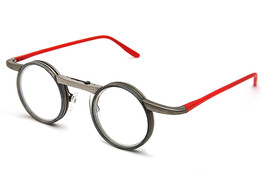
...For people who just can't adjust to wearing regular bifocals or progressive lenses, help is here. Adjustable-focus glasses have a nosepiece slider that let the user adjust the focus for distance, intermediate or near vision. Optometrists say the glasses work well but they are far from fashionable....
Corneal Abrasions in Young Infants
...Corneal abrasions are extremely common among 1- to 12-week-old infants and have unclear clinical significance. Primary care physicians should be careful about attributing unexplained persistent crying to corneal abrasions, potentially missing a more-serious problem...
Comments: This paper is available online. DM
Comments: This paper is available online. DM
The Human Brain Processes Predictable Sensory Input In A Particularly Efficient Manner
...It turns out that there is a striking similarity between how the human brain determines what is going on in the outside world and the job of scientists. Good science involves formulating a hypothesis and testing whether this hypothesis is compatible with the scientist's observations. Researchers in the Max Planck Institute for Brain Research in Frankfurt together with the University of Glasgow have shown that this is what the brain does as well. A study shows that it takes less effort for the brain to register predictable as compared to unpredictable images. ...
Controlled Study Finds Possible Early Warning Signs For Autism Spectrum Disorders Within Families
...A new study suggests a trend toward developing hyperactivity among typically developing elementary-school-aged siblings of autistic preschoolers and supports the notion that mothers of young, autistic children experience more depression and stress than mothers with typically developing children....
Statement From The Department Of Health & Human Services Regarding The Decisions Of The U.S. Court Of Federal Claims In The Omnibus Autism Proceeding
...As these latest cases illustrated, there's no doubt that autism and autism spectrum disorders place a heavy burden on many families. We know that autism and related disorders are conditions that present many special challenges to all families touched by these disorders. That is why the U.S. Department of Health and Human Services provides services to families with family members with autism spectrum disorder and continues to support research to better understand risk factors and causes of autism spectrum disorders and develop more effective methods of treatment. ...
More Coffee Benefits!
Effects of coffee consumption on subclinical inflammation and other risk factors for type 2 diabetes: a clinical trial
Coffee consumption appears to have beneficial effects on subclinical inflammation and HDL cholesterol, whereas no changes in glucose metabolism were found in our study. Furthermore, many coffee-derived methylxanthines and caffeic acid metabolites
appear to be useful as biomarkers of coffee intake.
Comments: See ful article by clicking on title above. DM
Coffee consumption appears to have beneficial effects on subclinical inflammation and HDL cholesterol, whereas no changes in glucose metabolism were found in our study. Furthermore, many coffee-derived methylxanthines and caffeic acid metabolites
appear to be useful as biomarkers of coffee intake.
Comments: See ful article by clicking on title above. DM
Scientists find why "sunshine" vitamin D is crucial
....Vitamin D is vital in activating human defences and low levels suffered by around half the world's population may mean their immune systems' killer T cells are poor at fighting infection...
The Autism Advocate
What Can Be Done to Help With Sensory Processing Challenges?
...Vision therapy: This therapy, which can consist of a combination of exercises and lenses, can be effective to help process incoming information for someone whose vision processing is not working correctly....
...Vision therapy: This therapy, which can consist of a combination of exercises and lenses, can be effective to help process incoming information for someone whose vision processing is not working correctly....
Babies are born to boogie
...Babies love a beat, according to a new study that found dancing comes naturally to infants....The research showed babies respond to the rhythm and tempo of music, and find it more engaging than speech....The findings, based on a study of 120 infants between 5 months and 2 years old, suggest that humans may be born with a predisposition to move rhythmically in response to music.....
Visit msnbc.com for Breaking News, World News, and News about the Economy
Tuesday, March 16, 2010
Announcements from the College of Optometrists in Vision Development
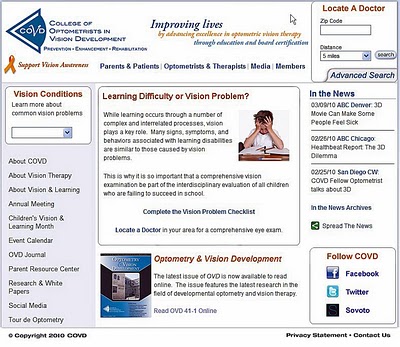
COVD Launches New & Improved Website
COVD is pleased to announce the launch of the newly revised www.covd.org.
The website has a fresh new look, and is designed to better suit the needs of the public and our members. Navigation toolbars have been added and the most popular feature of our site, the 'Locate A Doctor' tool, has a more visible location. Many additional upgrades will be following. They include:
Online membership directory
Online registration for the COVD 40th Annual Meeting
Online dues payment and personal information management
Improved website search function
and much more!
Please take a look at the new website and let us know what you think!
OVD 41-1 Online Now
The latest issue of Optometry & Vision Development is now available to read online. The issue features the latest research in the field of developmental optometry and vision therapy.
Read the following editorials, articles and papers: The Binocular Vision Dysfunction Pandemic, A History of Israeli Optometry - 10 Year Update, The Hadassah Academic College Department of Optometry, The Effect of Test Sequence on Measurement of Positive and Negative Fusional Vergence, Accommodative Amplitude Determination: Pull-away versus Push-up Method, The Relationship between the Heterophoria and Visual Organization in First and Second Grade Children on the Gesell Copy Form Test, A New Concept in Heterophoria Assessment: The Koslowe Monocular Straw Test and its Implications, Current Eye & Vision Science Literature, NewsMakers
COVD 40th Annual Meeting
COVD 40th Annual MeetingOctober 12-16, 2010
Rio Mar Beach Resort
Rio Grande, Puerto Rico
Join COVD in Puerto Rico!
Call for Papers
COVD is now accepting Abstract Submissions. Deadline for abstract submission is June 11, 2010.
Annual Meeting Travel Grant
The Annual Meeting Travel Grant is offered to encourage and support optometry students and residents to participate at the COVD 40th Annual Meeting. Deadline for application submission is August 12, 2010.
Go to http://www.covd.org for more information.
Monday, March 15, 2010
Vision Therapy For ADHD.

Comments from a Chiropractic Physician:
...I recently came across an article in the NY Times that speaks of using vision therapy to correct problems in children like learning disabilities and ADHD. The article explores the divide that exists between what mainstream medical practitioners think and optometrists think when it comes to vision therapy. Most of the health practitioners who practice vision therapy for leaning disabilities happen to be optometrists.
Behavioral optometry, as it is called when optometrists focus on these types of conditions, is a growing field within optometry. This is similar to my own chiropractic profession in which regulated subspecialties like neurology, radiology and nutrition have emerged over the last 20 years or so. Behavioral optometrists use eye exercises to improve conditions such as ADHD, Autism, learning disabilities and even neck pain.
Mainstream medicine, of course, finds this abhorrently offensive because it does not fit into their own paradigm of drug therapy. To them, everything that can be known is known and anything ‘outside the box’ is without a doubt wrong and probably dangerous. As a matter of fact, they will often tell you if you seek these treatments the practitioners offering it are ‘quacks’ and are out to steal your money. This may sound harsh, but it is not an exaggeration. I have heard it many times from my patients who were unsuccessfully lobbied by their primary care doctors to stop seeing me for their treatments.....
Comments: Read more by clicking the title above....also read my response at the botton of his blog. Let me know what you think. DM
The development of myopia among children with intermittent exotropia
Ekdawi NS, Nusz KJ, Diehl NN, Mohney BG. The development of myopia among children with intermittent exotropia.Am J Ophthalmol. 2010 Mar;149(3):503-7.
In this population-based study of children with intermittent exotropia, myopia was calculated to occur in more than 90% of patients by 20 years of age. Observation versus surgical correction did not alter the refractive outcome.
In this population-based study of children with intermittent exotropia, myopia was calculated to occur in more than 90% of patients by 20 years of age. Observation versus surgical correction did not alter the refractive outcome.
From the San Diego News
3-D movies are helping screen viewers' eye problems
SAN DIEGO, Calif. (CBS 8) - 3-D movies are all the rage now, but if you're feeling dizzy or get headaches while watching these 3-D flicks, you may have an undiagnosed vision problem. What a lot of moviegoers might not know until they sit through a 3-D movie like "Alice in Wonderland" or "Avatar" is that they have an undiagnosed vision problem.
Doctor David Granet, director of pediatric ophthalmology at the UCSD School of Medicine, says it is common for everyone to experience some mild vision fatigue after sitting through hours of a 3-D film. "But there are some people who are very fatigued when they leave the theater, and that can be the sign of eye problems," Dr. Granet said.
The problems could range from poor eye alignment to poor binocular vision skills.
"If one eye sees well and the other doesn't, you won't be able to see 3-D," Dr. Granet said. Experts say these vision problems can impair eye-hand coordination, depth perception and reading ability, and also lead to headaches, nausea and blurred vision.
Doctor Granet says this can be especially prevalent - and treatable - in younger viewers, something parents should be aware of when talking with their kids after the 3-D event.
"If they say it looked like every other movie or say their eyes felt funny, I got a bad headache or I felt sick to my stomach, it's time to say let's go to the ophthalmologist and get checked," Dr. Granet said. [Comment: I would suggest that you do not go to an ophthalmologist...few understand binocular vision and optometric vision therapy. Go to http://www.covd.org to learn more and to find a doctor Board Certified in this area. Please note that Dr. Granet is one of the VERY few OMDs who understand the benefit of vision therapy.]
The good news, according to experts, is that these vision problems are highly treatable, especially in children, and the sooner any potential problems are diagnosed and corrected, the sooner you can return to the theater and actually enjoy the movie's 3-D effects.
According to experts, up to five percent of movie viewers will not be able to experience 3-D movies at all due to either crossed eyes or lazy eye, which is the lack of development of central vision in one eye.
SAN DIEGO, Calif. (CBS 8) - 3-D movies are all the rage now, but if you're feeling dizzy or get headaches while watching these 3-D flicks, you may have an undiagnosed vision problem. What a lot of moviegoers might not know until they sit through a 3-D movie like "Alice in Wonderland" or "Avatar" is that they have an undiagnosed vision problem.
Doctor David Granet, director of pediatric ophthalmology at the UCSD School of Medicine, says it is common for everyone to experience some mild vision fatigue after sitting through hours of a 3-D film. "But there are some people who are very fatigued when they leave the theater, and that can be the sign of eye problems," Dr. Granet said.
The problems could range from poor eye alignment to poor binocular vision skills.
"If one eye sees well and the other doesn't, you won't be able to see 3-D," Dr. Granet said. Experts say these vision problems can impair eye-hand coordination, depth perception and reading ability, and also lead to headaches, nausea and blurred vision.
Doctor Granet says this can be especially prevalent - and treatable - in younger viewers, something parents should be aware of when talking with their kids after the 3-D event.
"If they say it looked like every other movie or say their eyes felt funny, I got a bad headache or I felt sick to my stomach, it's time to say let's go to the ophthalmologist and get checked," Dr. Granet said. [Comment: I would suggest that you do not go to an ophthalmologist...few understand binocular vision and optometric vision therapy. Go to http://www.covd.org to learn more and to find a doctor Board Certified in this area. Please note that Dr. Granet is one of the VERY few OMDs who understand the benefit of vision therapy.]
The good news, according to experts, is that these vision problems are highly treatable, especially in children, and the sooner any potential problems are diagnosed and corrected, the sooner you can return to the theater and actually enjoy the movie's 3-D effects.
According to experts, up to five percent of movie viewers will not be able to experience 3-D movies at all due to either crossed eyes or lazy eye, which is the lack of development of central vision in one eye.
Top 7 Tips to Treat Eye Conditions Using Vision Therapy
1. Traumatic Brain Injury
2. Athletic Performance
3. Balance
4. Crossed Eyes, Lazy Eyes And Binocular Disorder
5. Learning Disabilities [...actually learning related vision problems. Optometric vision therapy does not teach reading, math or spelling. It does get the child visually ready to learn. DM]
6. Focusing Problems
7. Jerking Eye
Comments: Read more by clicking on the title above. DM
2. Athletic Performance
3. Balance
4. Crossed Eyes, Lazy Eyes And Binocular Disorder
5. Learning Disabilities [...actually learning related vision problems. Optometric vision therapy does not teach reading, math or spelling. It does get the child visually ready to learn. DM]
6. Focusing Problems
7. Jerking Eye
Comments: Read more by clicking on the title above. DM
Convergence Insufficiency - Often Misdiagnosed as ADD/ADHD
News report on ADHD and Convergence Insufficiency.
Convergence Insufficiency - Often Misdiagnosed as ADD/ADHD
News report on ADHD and Convergence Insufficiency.
Researchers find early autism signs in some kids
...Some infants headed for a diagnosis of autism, or autism spectrum disorder as it’s officially known, can be reliably identified at 14 months old based on the presence of five key behavior problems...
3 Rulings Find No Link to Vaccines and Autism
...In a further blow to the antivaccine movement, three judges ruled Friday in three separate cases that thimerosal, a preservative containing mercury, does not cause Autism....The three rulings are the second step in the Omnibus Autism Proceeding begun in 2002 in the United States Court of Federal Claims. The proceeding combines the cases of 5,000 families with autistic children seeking compensation from the federal vaccine injury fund, which comes from a 75-cent tax on every dose of vaccine. ...
AOA Marks March As "Save Your Vision Month
HealthDay (3/13, Preidt) reported that, according to eye experts, "job-related eye strain and injuries cost the American economy billions each year in lost productivity, but 90 percent of those problems could be prevented with simple measures, such as having workers wear properly designed and fitted protective eyewear." In a news release, James Sheedy, the American Optometric Association's occupational vision specialist, also pointed out that "even jobs requiring 'smart phones,' laptops, and desktop computers can cause vision problems, if not used properly." Therefore, "to mark Save Your Vision month in March, the AOA" offered "tips for preventing computer vision syndrome," such as taking 20-second breaks every 20 minutes to look at something 20 feet away while working on the computer.
Parent Revolution to Beat Dyslexia or Learning Disabilities
....3- If your child skips words or lines when reading, has trouble copying off the board or get headaches when reading, have their eyes checked by a Developmental Optometrist - go to www.covd.com to find one near you. There are two routes for improvement
a. Vision therapy done at the optometrist’s office
b. Exercises you can do at home....
Comments: Click on the title above to read the whole presentation. I wanted you to know that parents are learning more and more about optometric vision therapy and what it can do for their families.
a. Vision therapy done at the optometrist’s office
b. Exercises you can do at home....
Comments: Click on the title above to read the whole presentation. I wanted you to know that parents are learning more and more about optometric vision therapy and what it can do for their families.
Millions Suffer from Undiagnosed Vision Problems
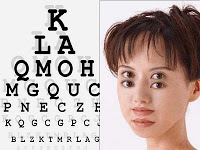
Millions Suffer from Undiagnosed Vision Problems
Aurora, OH - In the latest issue of Optometry & Vision Development (OVD), Dr. Dominick Maino, editor of OVD, notes that: “In 2010 there are 9 million people with lazy eye and 18 million individuals with eye-turns. For children under 18 years of age that means there will be, unfortunately a very large number of children with these often undiagnosed but treatable eye problems. One research study suggests that the prevalence of these eye problems within the general population is 56% or 60 million men, women, and young adults.” He also says, “In comparison to glaucoma, cataract, age-related macular degeneration, and other various eye diseases; binocular vision disorders are… more frequently encountered than these diseases and have significant negative effects on one’s quality of life. … One study revealed that the prevalence of these vision disorders… is 9.7 times greater than the prevalence of eye disease in children ages six months to five years and it’s 8.5 times greater than the prevalence of ocular disease in children ages six to 18 years… Shouldn’t your eye doctor not only check for eye disease, but also eye teaming, focusing and eye movement problems that affect how well you work, study, and play?” For more information go to www.covd.org, click on the “OVD Journal” link, and read “The Binocular Vision Dysfunction Pandemic.”
Israeli Optometry Featured in Optometry & Vision Development (OVD)
Optometry is a relatively young profession with the first laws governing its existence passed in the USA early in the 1900s. In Israel, the profession is just now coming of age. In OVD, Volume 41, Number 1, well known and respected Israeli optometrists, Drs. Koslowe and Stoller review the many changes to the profession in Israel and the need for future changes; while Dinah Paritzky, BSc, MCOptom; Ariela Gordon-Shaag, PhD; and Rachel Eichler, OD tell us about the The Hadassah Academic College Department of Optometry.
This issue of OVD also published several research articles by Israeli optometric scientists that include how the sequence of testing procedures affects test outcomes, an assessment of which focusing tests are best, and how first and second grader’s eye teaming capabilities affect their ability to visually organize their world. Additional articles discuss a new testing technique and review the current research from other journals.
About Optometry & Vision Development
Optometry & Vision Development (OVD) is a peer-reviewed open access journal indexed in the online Directory of Open Access Journals. The full text of these articles is available free from www.covd.org. OVD is an official publication of the College of Optometrists in Vision Development. Any questions may be addressed to the editor, Dominick M. Maino, OD, MEd, FAAO, FCOVD-A at [email protected] or 312-949-7282.
About COVD
The College of Optometrists in Vision Development (COVD) is an international, non-profit optometric membership organization that provides education, evaluation, and board certification programs in behavioral and developmental vision care, optometric vision therapy, and visual rehabilitation. The organization is comprised of doctors of optometry, vision therapists and other vision specialists. For more information on learning-related vision problems, optometric vision therapy, and COVD please visit www.covd.org or call 888.268.3770.
CONTACT: Pamela R. Happ, CAE
COVD Executive Director
Phone: 888.268.3770
Email: phapp@ ovd.org
Website: www.covd.org
Sunday, March 14, 2010
Illinois Eye Institute Foundation (IEIF) Awesome Success!
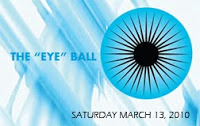
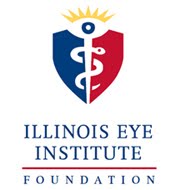
As you may know if you read this blog regularly, I attended the Illinois Eye Institute Foundation (IEIF)Gala and Silent Auction at the Four Seasons Hotel in downtown Chicago. This very special event was attended not only by IEI folks, but many major movers and shakers within Illinois Health Care and politics. I even had a chance to talk to a classmate of mine I haven't seen in decades!
There were 2 very special items up for auction....well, at least special to me. One of them was a photograph I took which I donated for the occasion.... This was special to me for several reasons....it allowed me to step outside my optometric persona to support the IEIF...and folks actually bid on it! (I did do a bit of arm twisting from time to time.)
The other item was a donation from Almont Green. He does magnificent photography in 3D and is very anxious to support activities that provide children an opportunity to develop normal binocular vision. He is a truly awesome gentleman. Go to http://www.almontgreen.com/ to see some astounding work. I (and several other bidders) fought to obtain his African Mask (in 3D) masterpiece. I persisted and won the bid!!
The bottom line, of course, is that all the money raised (including $5000 bid on tickets to the Grammies) goes to support the many charitable efforts of the IEIF. Read the story below. Even in these difficult times, you might get the urge to support this optometric charity...DM
Established in 2008, the Illinois Eye Institute Foundation (IEIF) is a not-for-profit organization dedicated to supporting and promoting the community outreach, charitable programs and advancement of research at the Illinois Eye Institute.
With over 90,000 patient visits each year, the Illinois Eye Institute (IEI) is a leading provider of vision and eye care services in the state, as well as the nation. The IEI provides comprehensive multi-specialty eye care for patients of all ages from the Chicago metropolitan region and beyond, giving superior care regardless of the patient’s ability to pay. Over 40% of IEI patients are served through state assistance or charitable programs. IEI services include primary eye care, pediatric optometry, binocular vision, low vision rehabilitation, contact lenses, emergency care and ocular disease. The IEI is also a leader in eye care education and research, a superior clinical training ground for Illinois College of Optometry students and residents, and a resource for continuing medical education for eye doctors around the world.
IEIF Programs
The Illinois Eye Institute Foundation (IEIF) supports and promotes the charitable programs of the Illinois Eye Institute to help people in need access important eye care services so they may enjoy improved health and development and an enhanced standard of living.
The IEIF also supports short-term projects to address unique and time-sensitive needs. As an example, the Ugandan Children’s Choir, during their recent visit to Chicago, received comprehensive eye care and glasses at the Illinois Eye Institute. While these services are sight-saving for many individual patients, they are also costly procedures.
Community Outreach and Charitable Programs
Vision of Hope Health Alliance (VOHHA)
Reaching out to those who cannot afford health care
VOHHA provides comprehensive eye care to uninsured, low-income adults—largely referred to the IEI by partner agencies—and helps to connect these patients, as needed, to primary healthcare providers. VOHHA patients receive comprehensive examinations, follow-up care including diagnostic testing, eyeglasses/other devices, and personalized health information.
VSP Pediatric Outreach Program (POP)
Helping children to succeed through healthy vision
The VSP POP provides comprehensive vision care for high-risk children from birth to five years of age at early intervention programs throughout Chicago. Once per week, faculty and students visit an agency to perform eye examinations to measure visual acuity, eye teaming skills, refractive condition and ocular health. Any prescribed eyeglasses are delivered to the children at their agency. VSP has made a multi-year commitment to this program.
InfantSEE
Helping infants to establish a lifetime of healthy vision
This initiative of the American Optometric Association ensures that eye and vision care becomes an integral part of infant wellness to improve a child's quality of life. Comprehensive infant eye assessments are provided as a public health service within the first year of life at no cost to the patient/family.
Low Vision Rehabilitation Service (LVRS)
Enhancing quality of life for patients with visual impairment
When vision loss cannot be restored through medical or surgical treatment, the LVRS helps patients attain the highest level of improved vision for independent living despite the visual limitations. Through grant funding, low-income seniors are provided optical and non-optical devices not covered by Medicare to enhance their ability to perform daily activities. Additionally, IEI faculty and students make visits twice per year to the Illinois School for the Visually Impaired in Jacksonville, IL to provide low vision services to children.
Binocular Vision/Vision Therapy Service
Addressing learning related vision problems.
More than just seeing objects clearly, vision involves collecting information through our eyes and processing the information so that it has meaning. The IEI’s Vision Therapy Clinic offers a progressive program of vision procedures to help patients develop or improve fundamental visual skills and abilities, improve visual comfort, ease and efficiency, and/or change how a patient processes or interprets visual information.
Developmental Disabilities Service (DDS)
Meeting the eye care needs of special populations
The DDS is committed to serving developmentally disabled patients with the fullest extent of services possible, as well as training future doctors to meet the multiple eye/vision care needs of special populations. Services are provided at the IEI and at the Victor C. Neumann Association. IEI faculty and students also coordinate and participate each year in the provision of vision and eye health screenings as well as eyewear for Special Olympians. The IEI DDS is expanding its services to include those with acquired or traumatic brain injury.
Subscribe to:
Posts (Atom)